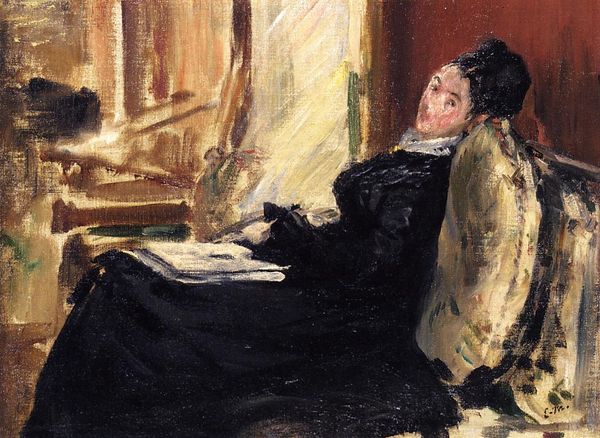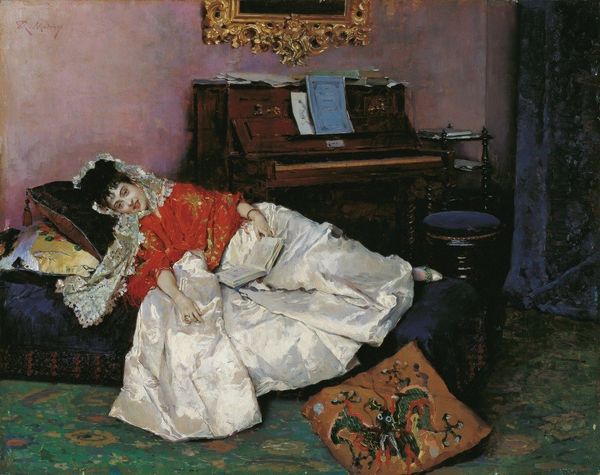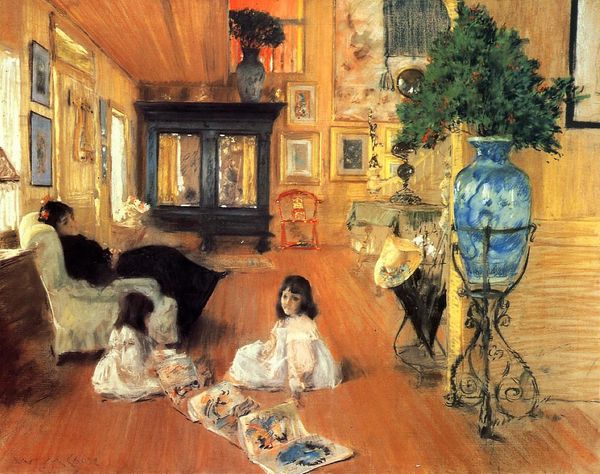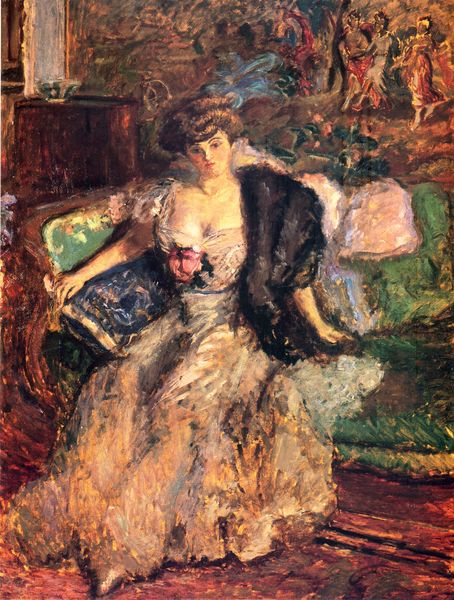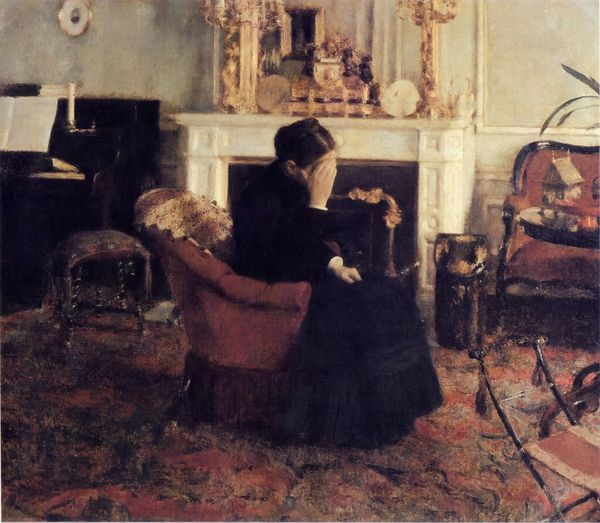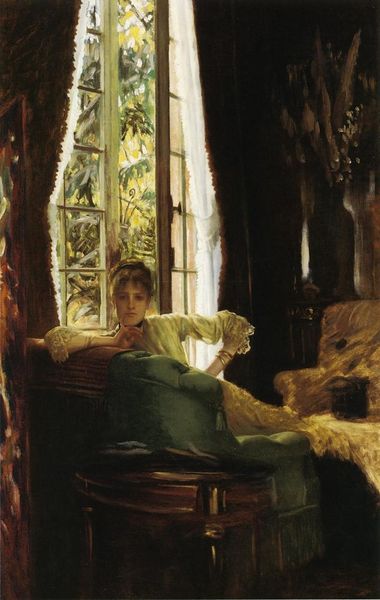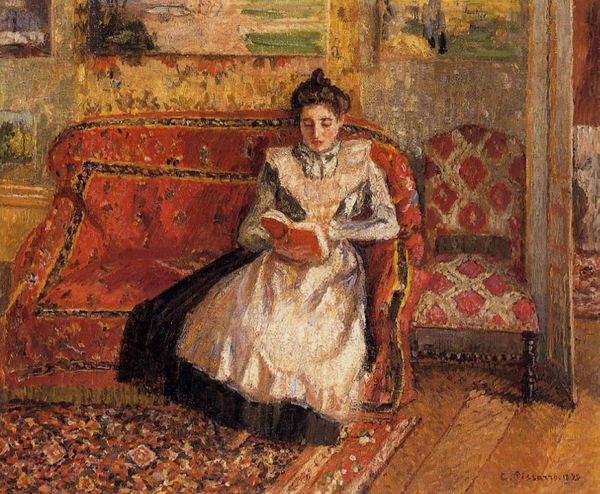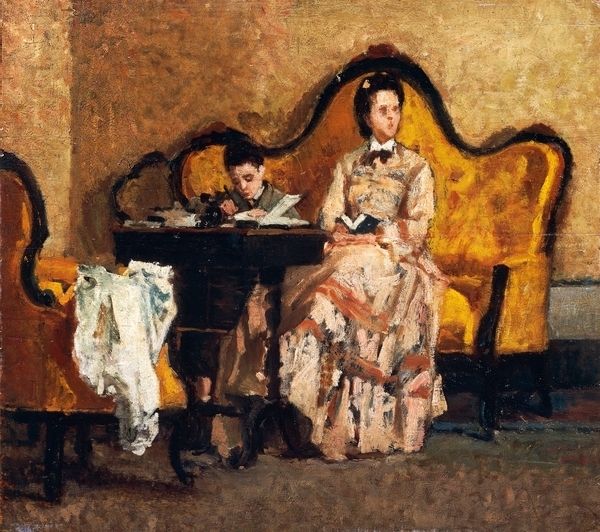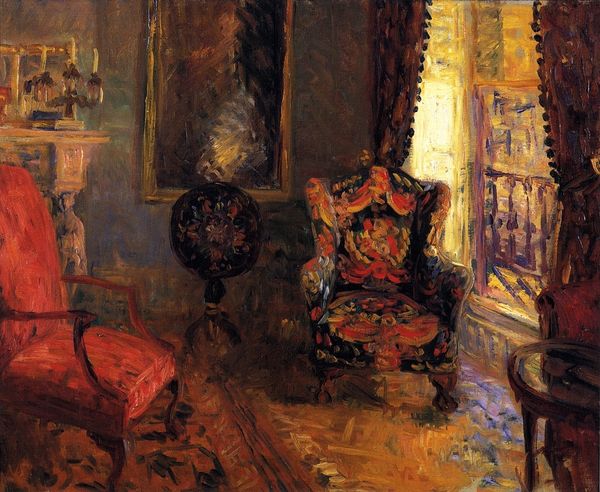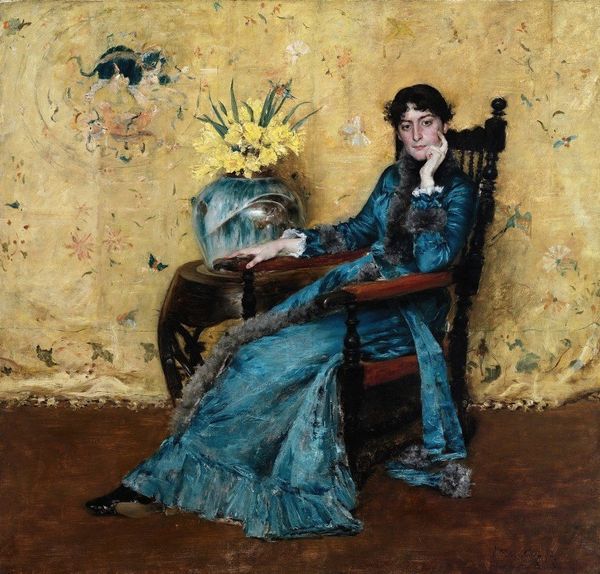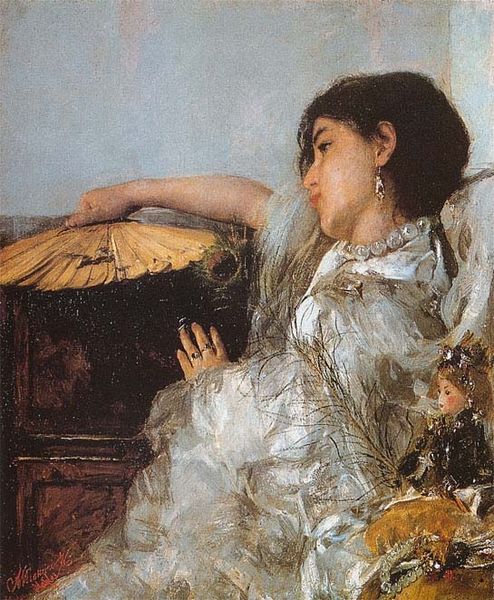
Dimensions: 58.42 x 73.66 cm
Copyright: Public domain
Editor: This is William Merritt Chase's "In the Studio," painted in 1892. It's an oil painting, and the scene feels quite intimate. There's a woman relaxing amidst art objects. I’m curious about your take. What do you see in this piece beyond the surface? Curator: Look closely at the chair; it's almost coarsely woven compared to the sleekness we might associate with high art furniture. Notice also the assortment of items displayed – a samovar, a decorative lion. It points to a consumption of culture, a commodification of the exotic. The very act of depicting a studio space becomes a self-aware commentary on art production. What materials constitute the paintings *within* the painting, and whose labor produced each item represented, including the dress the model wears? Editor: So, you're suggesting it’s not just a pretty picture, but a statement about art and its creation? The emphasis on process over pure aesthetics? Curator: Exactly! Consider the oil paint itself. Pigments had to be sourced, mixed, applied. Whose hands actually executed this process? Was it all Chase, or did assistants contribute? And how is the consumption of fine goods shown in contrast with those more craft-oriented items? These tensions challenge what constitutes ‘fine art.’ Think about how Impressionism embraced depicting everyday life and industry—and how Chase's "studio" includes, obscures, and perhaps even critiques the realities of that industrial production. Editor: That’s a fascinating way to look at it. I hadn't considered the labor behind everything represented. I was so focused on the atmosphere. Curator: It's easy to get swept up in the Impressionist mood. But by grounding our analysis in materiality, production, and the social implications embedded in these objects, we see beyond the surface and get closer to a fuller understanding of art in this period. Editor: This completely changes my perspective. I'll definitely look at art differently now. Thanks! Curator: My pleasure. Examining the "how" and "who" always reveals much more than just the "what."
Comments
No comments
Be the first to comment and join the conversation on the ultimate creative platform.
